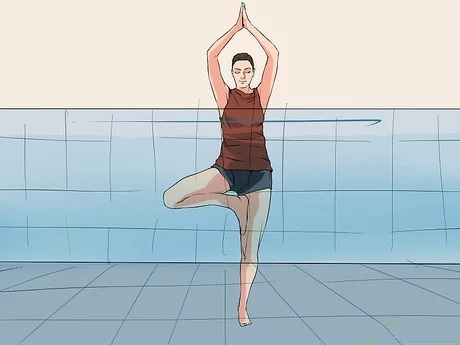The world of fitness is constantly changing and aqua asana is a prime example of that. For newbies, it might seem like something extraordinary, but to the seasoned eye, it’s quite simple. It’s a derivation of traditional yoga where only the setting of performing yoga is changed. Instead of performing it on land, aqua asana takes place in water. In this blog, we shall take a look at what aqua asana is and the many questions associated with it.
Exploring Aqua Asana:
Aqua asana is commonly known as water yoga and as the name suggests, is practiced in water. This dynamic practice combines different postures of yoga with the therapeutic benefits of water. The water supports your body which makes it easier to move around and stretch. It’s as simple as plain yoga but with the advantage of water resistance.
This yoga practice is mostly suitable for people who have a hard time moving around. Also, it’s helpful for those who have joint pain and back problems. Plus, it’s a cool way to stay active during the hot weather!
Benefits of Aqua Asana:
The benefits of aqua asana are outlined below
- Suitable for people with joint issues
- Improves flexibility
- Greater strength
- Stress relief
- Promotes cardiovascular health
- Greater balance and coordination
- Proper mind and body connection
- Suitable for all fitness levels
- Tool for rehabilitation
Getting Started with Aqua Asana:
Here are some points that you should consider when starting Aqua Asana
- Search for a suitable location where you can comfortably practice aqua asana. You can look for a pool or shallow body of water.
- Choose comfortable attire that doesn’t restrict your movement.
- Begin with a gentle warm-up and gradually proceed to the main practice. You can spend a few minutes swimming or walking to prepare your body.
- Once you are warmed up, focus on your breath. Inhale deeply, exhale slowly and allow your breath to guide you through the movements.
- Commence with basic poses and gradually proceed to difficult ones.
- Pay close attention to the poses and understand your body’s sensations and limitations.
- You might need to modify certain poses depending on your body’s abilities. Be sure to use props to assist you with stability and balance.
- Drink plenty of water before, during, and after your aqua asana practice to remain hydrated.
- Listen to your body and understand its limitations. Don’t exert yourself too much.
Safety Precautions and Considerations:
Here are some considerations that you need to follow when practicing Aqua asana
- Maintain proper form
- Listen to your body
- Be mindful of your surrounding
- Avoid overexertion
- Seek professional guidance
- Find a partner
Common poses of aqua asana:
Some common poses of aqua asana are given below:
- Floating Lotus: Sit comfortably in the water with your legs crossed and hands resting on your knees. Close your eyes and focus on your breath as you gently float on the surface of the water.
- Water Warrior: Stand in chest-deep water with your feet hip-width apart. Extend your arms overhead, palms facing each other, and bend your knees to lower into a warrior pose.
- Aqua Tree Pose: Stand in waist-deep water with your feet hip-width apart. Shift your weight onto your left foot and place the sole of your right foot against the inner thigh or calf of your left leg. Bring your hands to your heart center or extend them overhead like branches of a tree.
- Floating Forward Fold: Stand in waist-deep water with your feet hip-width apart. Exhale as you hinge forward at the hips, allowing your upper body to fold forward towards the water. Let your arms hang loosely or reach for your ankles.
As you dive into aqua asana, feel the flow of movement and soak in the peacefulness of the water. Fully immerse yourself in the relaxing benefits of aqua asana and connect with your inner self. Your mind, body, and soul will thank you for this wonderful experience.
For more blogs visit on our Nepal Yoga Home blog section.

